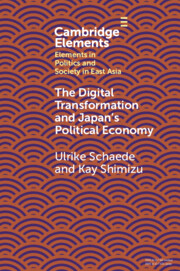Element contents
The Digital Transformation and Japan's Political Economy
Published online by Cambridge University Press: 01 June 2022
Summary
Keywords
- Type
- Element
- Information
- Online ISBN: 9781108921015Publisher: Cambridge University PressPrint publication: 30 June 2022
References
- 1
- Cited by

